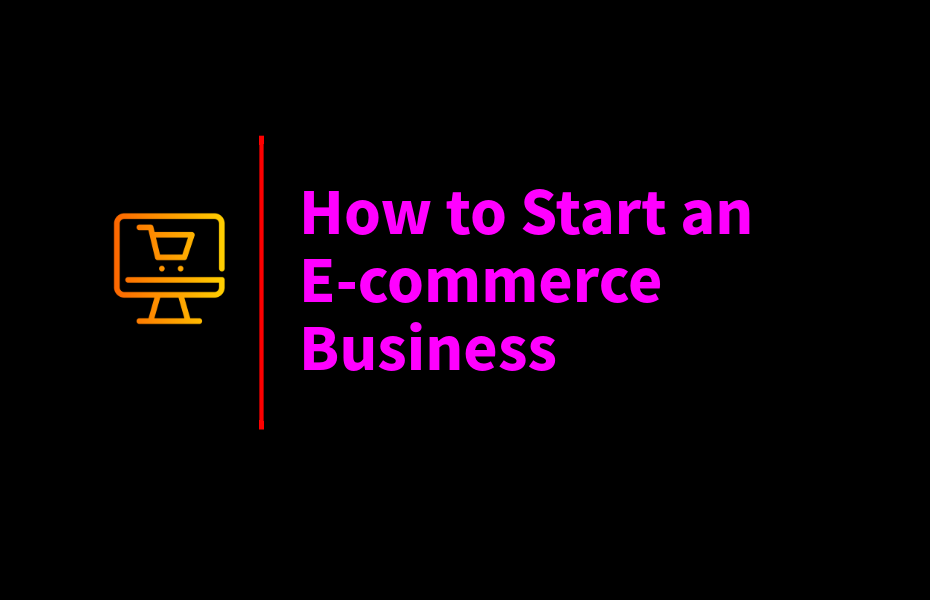Starting an e-commerce business in 2024 is more accessible than ever. With advancements in technology, digital marketing, and online shopping behavior, launching a profitable online store is no longer just for big corporations. Whether you’re selling physical products, digital downloads, or dropshipping, this guide will take you through the step-by-step process to help you successfully start your e-commerce journey.
Why is the Best Time to Start an E-commerce Business
📌 E-commerce is booming, and there’s still room for new entrepreneurs.
✅ Key Reasons to Start in:
✔ Growth of Online Shopping – Global e-commerce sales are projected to exceed $6.3 trillion in 2024 (Statista).
✔ Low Startup Costs – Many platforms offer affordable solutions for new store owners.
✔ AI & Automation – Advanced tools make inventory management, marketing, and customer support easier.
✔ More Payment Options – Customers prefer multiple payment gateways like Apple Pay, Google Pay, and Buy Now Pay Later (BNPL) solutions.
👉 Related Article: Best E-commerce Platforms for Small Businesses
1. Choose a Profitable Niche
📌 Selecting the right niche is the foundation of a successful online store.
✅ How to Choose a Niche That Sells:
✔ Identify Market Demand – Use Google Trends, Amazon Best Sellers, and niche forums.
✔ Find Low-Competition Opportunities – Look for underserved markets.
✔ Consider Profitability – Ensure you have healthy margins after expenses.
✔ Align with Your Passion – Selling something you’re interested in makes it easier to stay motivated.
💡 Example: A niche like sustainable fashion is trending, and eco-conscious consumers are actively looking for eco-friendly brands.
🔗 External Resource: How to Find a Profitable Niche (Shopify)
👉 Related Article: How to Optimize Your E-commerce Website for SEO
2. Select the Right E-commerce Platform
📌 Your platform choice affects store functionality, scalability, and user experience.
✅ Best E-commerce Platforms for Beginners:
| Platform | Best For | Pricing |
|---|---|---|
| Shopify | Beginners, dropshipping | $29/month |
| WooCommerce | WordPress users | Free (Hosting required) |
| BigCommerce | Growing businesses | $29/month |
| Wix E-commerce | Simple store setups | $27/month |
| Squarespace | Creative & design-focused businesses | $23/month |
💡 Example: A fashion store might choose Shopify for easy integration with print-on-demand services, while a blogger selling digital products might prefer WooCommerce for flexibility.
🔗 External Resource: Best E-commerce Platforms Comparison (Forbes)
👉 Related Article: Best E-commerce Platforms for Small Businesses
3. Set Up Your Online Store
📌 Once you’ve chosen your platform, it’s time to build your store.
✅ Essential Steps for Store Setup:
✔ Get a Domain & Hosting – Use Namecheap, Bluehost, or GoDaddy for domains.
✔ Select a Mobile-Responsive Theme – A clean design improves conversion rates.
✔ Add Essential Pages – Include Home, About, Contact, and Privacy Policy pages.
✔ Optimize Product Listings – Use high-quality images, compelling product descriptions, and clear pricing.
💡 Example: A store selling handmade candles might highlight unique ingredients, craftsmanship, and sustainability to attract eco-conscious shoppers.
🔗 External Resource: How to Set Up an Online Store (HubSpot)
👉 Related Article: How to Write Compelling Product Descriptions for E-commerce
4. Set Up Payment Gateways & Shipping Options
📌 Customers expect secure and fast payment options.
✅ Best Payment Gateways for E-commerce:
✔ Stripe – Global, easy to integrate.
✔ PayPal – Trusted worldwide.
✔ Square – Best for small businesses.
✔ Shopify Payments – Seamless checkout for Shopify users.
✅ Shipping & Fulfillment Options:
✔ Self-Fulfillment – Store and ship products yourself.
✔ Dropshipping – Supplier handles storage and shipping.
✔ Third-Party Logistics (3PL) – Services like ShipBob or Fulfillment by Amazon (FBA) manage shipping.
💡 Example: A dropshipping business selling electronics may choose AliExpress suppliers for fulfillment while using Stripe and PayPal for payments.
🔗 External Resource: Best Payment Gateways for Online Businesses (Investopedia)
👉 Related Article: Best Payment Gateways for E-commerce Websites
5. Market Your E-commerce Business
📌 Your store won’t succeed without a solid marketing strategy.
✅ Marketing Strategies to Attract Customers:
✔ SEO Optimization – Rank higher on Google using optimized product pages.
✔ Social Media Marketing – Promote on Instagram, TikTok, and Pinterest.
✔ Email Marketing – Build a list and send exclusive offers & updates.
✔ Influencer Collaborations – Partner with micro-influencers to reach more customers.
💡 Example: A skincare e-commerce store may use Instagram Reels and TikTok videos to showcase products and customer testimonials.
🔗 External Resource: E-commerce Marketing Strategies (Neil Patel)
👉 Related Article: How to Create a Winning E-commerce Marketing Strategy
6. Scale & Grow Your Business
📌 Once you’ve launched, focus on growth strategies.
✅ How to Scale Your E-commerce Store:
✔ Retargeting Ads – Bring back visitors who didn’t buy.
✔ Loyalty Programs – Offer discounts and rewards to repeat customers.
✔ Upselling & Cross-Selling – Increase revenue per customer.
✔ Expand Product Lines – Add complementary products.
💡 Example: A home decor store can expand to offer matching furniture sets after success with individual decor items.
🔗 External Resource: How to Scale an Online Business (Shopify)
👉 Related Article: How to Increase Sales on Your E-commerce Website
Common Mistakes to Avoid When Starting an E-commerce Business
🚫 Skipping Market Research – Selling products without demand leads to failure.
🚫 Choosing the Wrong Platform – Pick a scalable solution from the start.
🚫 Ignoring SEO & Marketing – No traffic = No sales.
🚫 Lack of Secure Payment Options – Trust is critical for online sales.
🚫 Poor Customer Service – Offer live chat, email support, and easy returns.
🔗 External Resource: Common E-commerce Mistakes (Forbes)
👉 Related Article: How to Handle Returns and Refunds in E-commerce
Final Thoughts
Starting an e-commerce business in 2024 is an exciting opportunity. By choosing the right niche, platform, marketing strategy, and scaling approach, you can build a successful online store that attracts customers and generates revenue.
💡 Key Takeaways:
✔ Pick a profitable niche with demand.
✔ Choose an e-commerce platform that fits your needs.
✔ Optimize product pages, SEO, and marketing.
✔ Provide a seamless shopping experience.
Now, get started and launch your e-commerce business today! 🚀

